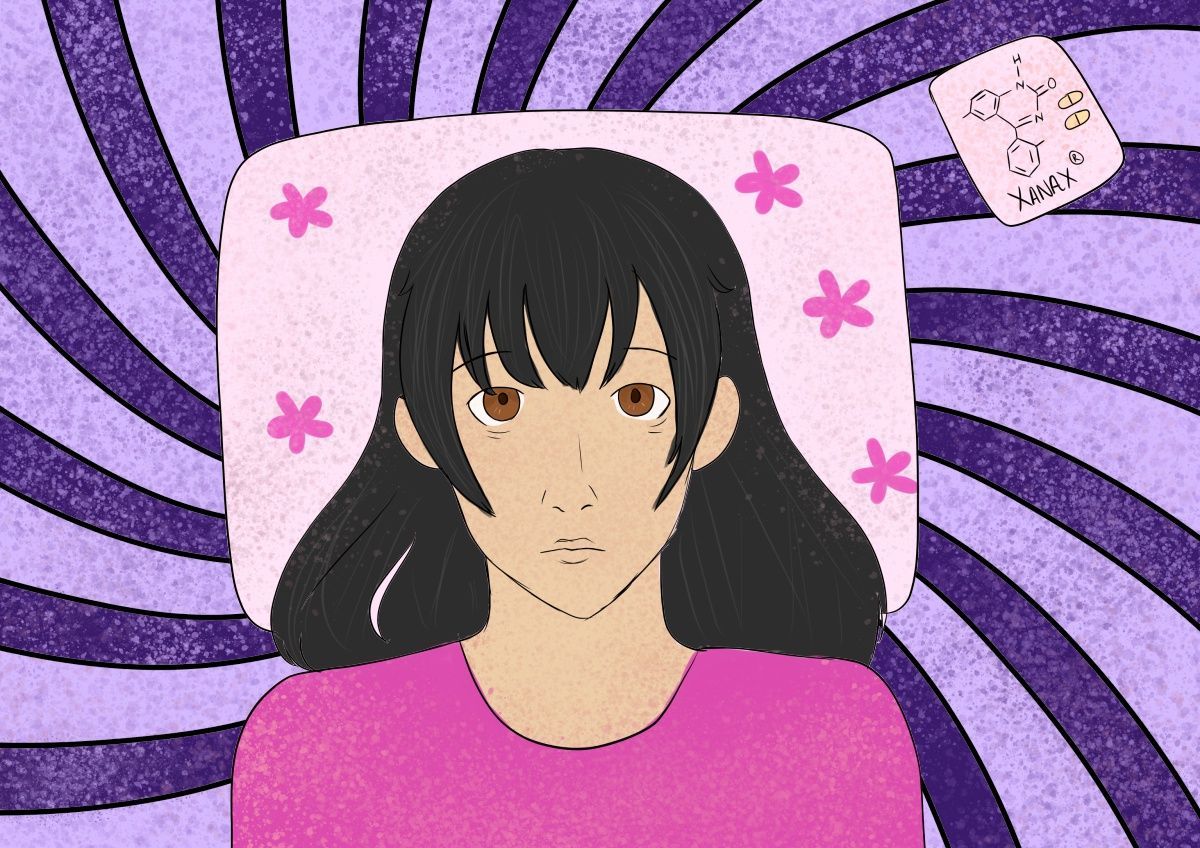A Restful Trance
What link exists between hypnotic drugs, sleep-related issues and hypnosis?

What link exists between hypnotic drugs, sleep-related issues and hypnosis?
On a sleepless night, I was researching issues related to sleep. While looking at potential treatment options, one particular method caught my eye—using hypnotic drugs to induce sleep. My mind immediately fixated on the word “hypnotic”, and can you really blame me? A majority of my reading as a child involved hypnosis in some way, shape or form, after all, and the seed of curiosity had been sown.
As I moved on with life, my mind kept circling back to the sleep-inducing drugs, and the seed sprouted. My inner child had to find out whether the two were truly connected, and my inner biologist how the drugs were able to bring about sleep, regardless of connection
To start my exploration, I first needed to know: what exactly are hypnotic drugs? Derived from the Greek word Hypnos, meaning sleep, these drugs are commonly prescribed as sleep-inducing drugs. They are a class of psychoactive drugs that are meant to initiate, sustain and lengthen sleep, and are commonly used to treat sleep-related conditions such as insomnia, sleepwalking and night terrors. In terms of chemical composition, a majority are benzodiazepines—a chemical whose structure is based on the fusion of a benzene ring and a diazepine ring. Aside from benzodiazepines, there are also non-benzodiazepines (more commonly referred to as Z-drugs) which, although shorter acting, are about as effective as the former and studies have shown that they may even be safer both in terms of side effects as well as preventing substance abuse.
While the word insomnia can be traced back to the early 17th century, it was between late 19th century and early 20th century that it was used to describe it as the medical condition we know it as today, and substance-based treatment of insomnia can be traced back to 1869, where the chemical chloral hydrate was used. Research about using medication to treat insomnia only ever took off in the 20th century, when consolidated sleep became the norm, and, in the late 1970s, benzodiazepine established itself as the most effective and safe drug.
Picture this—it’s the industrial revolution, and great importance is given to productivity and efficiency. Due to the introduction of artificial lighting, sleep time is even later than it was a few years prior. For some reason, though, no matter what time you go to sleep, you always wake up at the same time—around midnight, give or take a couple of hours. You want to go to sleep, you really do! But there’s work to be done, and money to be made. As the provider of the family, you can’t afford to sleep. Those few hours you spend lazing away in bed could instead be used toiling in the factory to earn those extra wages.
Despite how bizarre it seems in the modern context, this was actually quite normal in ancient times—waking up in the middle of the night, that is. In fact, it seemed like deep sleep was a bad thing back then—”The Nightmare”, a painting made by Henry Fuseli in 1782 depicts a woman in a deep slumber, watched by an imp-like creature as well as a demonic horse (a night-mare, if you will). It makes perfect sense why deep sleep was regarded with distaste, though—in those days, people had to worry about being invaded, predator attacks, fire, tending to the sick as well as a myriad of untreatable aches and pains.
Although medicines can be used to treat insomnia in the modern day and age, there is a much older practice that was used to treat a variety of conditions—hypnotherapy. The earliest documentation of the practice dates back to 1027 in The Book of Healing, written by Persian polymath Avicenna, but there is evidence that the ancient Hindus used a similar technique on themselves to heal various ailments. Known as temple sleep, it was a state induced by meditation, and can be used today to address unhelpful thought habits and unwanted thought patterns.
In the late 1700s, hypnotherapy was being viewed under the lens of science rather than that of mysticism. Although initially induced with the aid of magnetic forces, by the 1800s scientists understood that magnets were not necessary for induction of hypnosis. Abbe Faria, a Catholic monk, publicly demonstrated that it was in fact the power of suggestion that lay at the core of hypnosis rather than “animal magnetism”, as was the popular belief at the time. His discoveries allowed for hypnosis to be a viable anesthetic, but by the time of the Civil War heavy criticism and access to more reliable anesthetics caused hypnosis to be used instead to treat mental conditions.
Hypnotherapy in the modern day mostly involves usage of mental imagery and verbal repetition to relax the mind of the patient to make them more receptive to transformative messages. The effectiveness of hypnotherapy depends on the hypnotizability of the individual—scientists have found that people who are highly hypnotizable have greater connectivity between the areas of the brain which control salience and executive control.
Hypnosis is done with mental imagery, but how do hypnotic drugs work? Here’s where we look at the interaction between the chemical and specific proteins found on the cell membranes of nerve cells in our body called GABAA receptors. GABAA receptors are attached to a protein which acts as a channel between the outside and inside of the cell for the passage of ions, and require a specific molecule—the neurotransmitter GABA, namely—to open that channel.
The receptor has an active site, a region shaped in such a way that only specific molecules can bind to it, namely the GABA molecule. A side region of the protein, called the allosteric binding site, is shaped such that benzodiazepine can settle itself comfortably, thus altering the shape of the protein such that any incoming GABA molecule can now bind to the receptor better.
GABA causes the channel attached to the receptor to open and selectively allow only chloride ions to enter the cell, resulting in the potential difference (think voltage!) across the cell membrane to become negative. This effectively halts the transfer of information by the nervous system, and is the cause for the sedative effect of the drug.
Hypnotic drugs are generally safe and in the short term don’t have too many consequences, but, as with most synthetic chemicals, there is a high likelihood of experiencing several side effects. For example, benzodiazepines, despite their effectiveness, tend to worsen sleep in the long-term, and patients can develop a tolerance to them, resulting in rebound insomnia. Additionally, some patients may experience hangover-like symptoms, headaches, withdrawal or nausea. As a result, hypnotic drugs are generally kept as a last resort to treat sleep-related disorders, and methods, such as cognitive behavioral therapy for insomnia or changing sleeping habits, are suggested instead.
Whether you do or do not need hypnotic drugs to sleep, you do need a healthy amount of sleep—at least 7 hours, according to many studies. If you’ll excuse me now, my bed is calling me for a quick siesta.
